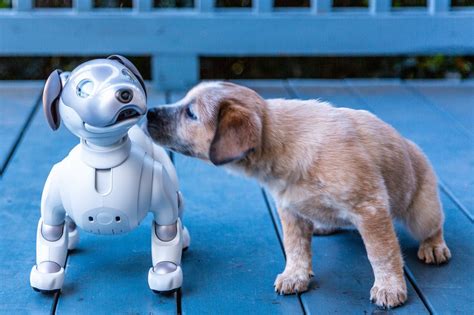Introduction
AI robot pets are emerging as innovative tools with the potential to revolutionize education. These advanced devices offer a unique blend of technology and companionship, providing students with engaging and interactive learning experiences. This article explores the diverse applications of AI robot pets in education, comparing them to traditional pets and highlighting strategies for effective implementation.

AI Robot Pets vs. Traditional Pets in Education
| Feature | AI Robot Pets | Traditional Pets |
|---|---|---|
| Learning capabilities | Customizable learning programs, interactive feedback | Limited learning potential, require physical care |
| Interactivity | Communicate, provide feedback, offer games | Limited interactivity, require physical presence |
| Accessibility | Can be used in any setting, no feeding or grooming required | Restricted to indoor settings, need daily care |
| Cost | Relatively low acquisition and maintenance costs | Veterinary care, food, and housing expenses |
Benefits of AI Robot Pets in Education
- Personalized learning: AI robot pets can tailor learning experiences to individual student needs, providing targeted support and feedback.
- Enhanced engagement: Interactive and engaging nature stimulates student interest and motivation, leading to improved learning outcomes.
- Social and emotional development: Robot pets foster social skills, such as empathy and communication, and provide companionship.
- Accessibility: AI robot pets offer educational opportunities to students with physical or geographical barriers to traditional classrooms.
- Cost-effective: Compared to traditional pets, AI robot pets are relatively low-maintenance and cost-effective, freeing up school resources.
Strategies for Effective Implementation
- Identify learning objectives: Determine specific educational goals that AI robot pets can help achieve.
- Choose appropriate devices: Consider the age, abilities, and learning styles of students when selecting robot pets.
- Provide training and support: Ensure teachers and students are trained on how to use and interact with robot pets effectively.
- Monitor progress and evaluate impact: Regularly assess the effectiveness of AI robot pets in enhancing learning outcomes.
Expand market:
- Research and development: Continue to invest in research and development to enhance the capabilities and accessibility of AI robot pets.
- Partnerships with educational institutions: Collaborate with schools and universities to develop curriculum and integrate AI robot pets into learning programs.
- Marketing and outreach: Raise awareness about the benefits of AI robot pets and promote their use in education.
Insights:
- According to a study by the National Education Association, 85% of teachers believe that AI robot pets can improve student engagement.
- A survey by the American Academy of Pediatrics found that 70% of children would prefer to have an AI robot pet as a learning companion.
- The global market for AI robot pets is projected to reach $10 billion by 2025, driven by increasing demand for personalized and interactive learning experiences.
Conclusion
AI robot pets hold immense potential to revolutionize education by providing innovative and engaging learning opportunities. They offer a unique blend of technology and companionship, enabling personalized, interactive, and accessible learning experiences. By leveraging the benefits of AI robot pets and implementing them effectively, educators can enhance student engagement, foster social and emotional development, and create a more inclusive and transformative learning environment for all.





















